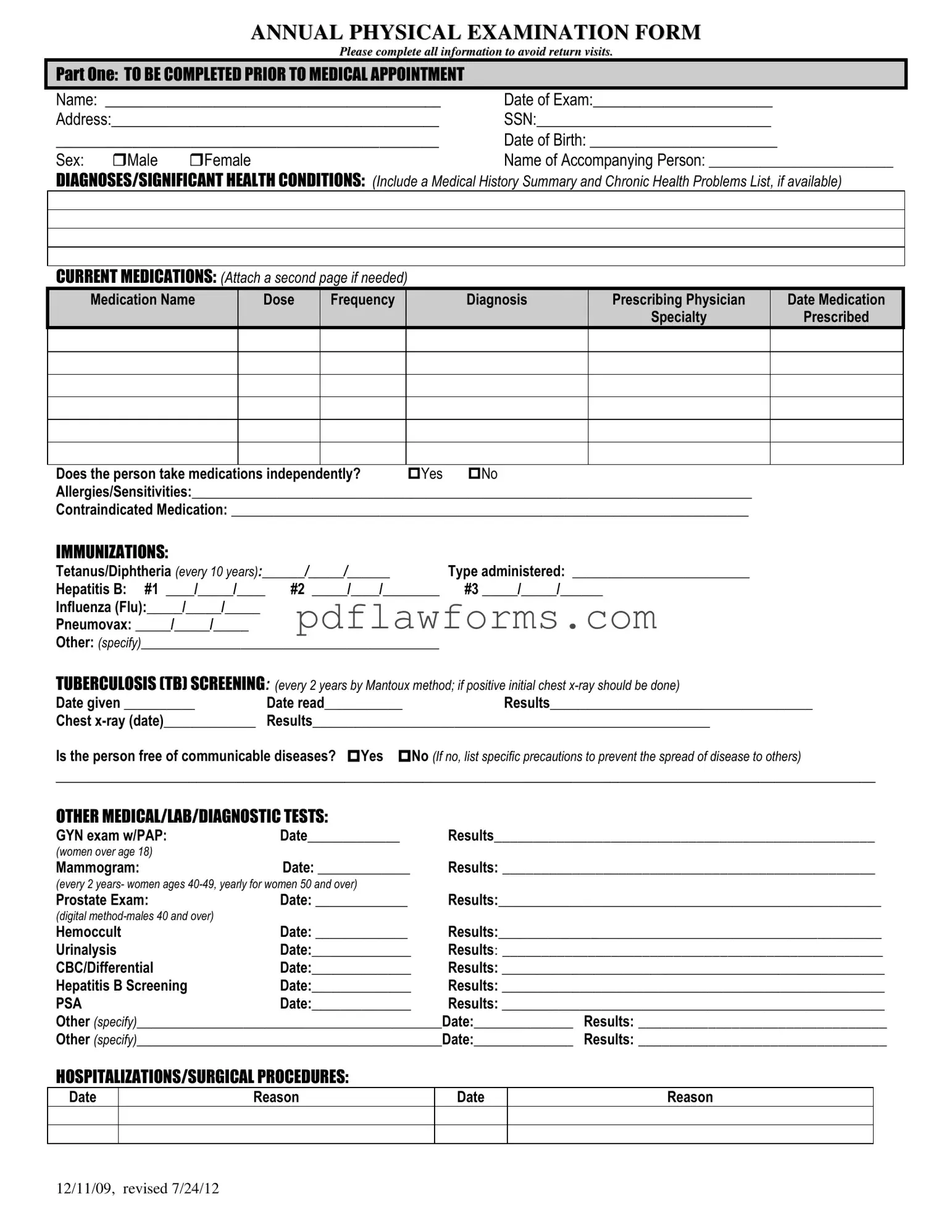The Annual Physical Examination form serves as a comprehensive tool designed to gather essential health information prior to a medical appointment. By completing this form, individuals can ensure that their healthcare providers have a complete picture of their medical history, current medications, and significant health conditions. The form is divided into two main parts. The first section requires personal details such as name, date of birth, and social security number, alongside a detailed account of any chronic health issues and allergies. It also prompts individuals to list their current medications, including dosage and prescribing physician, while addressing whether they take these medications independently. Immunization records are crucial as well, with sections for various vaccines and tuberculosis screening. The second part of the form focuses on the general physical examination, documenting vital signs like blood pressure and pulse, and evaluating different body systems for normal findings. Additional comments and recommendations for health maintenance are also included, guiding individuals on necessary follow-ups and lifestyle adjustments. Overall, this form is not just a bureaucratic requirement; it plays a vital role in fostering proactive health management and ensuring that patients receive tailored care based on their unique health profiles.
